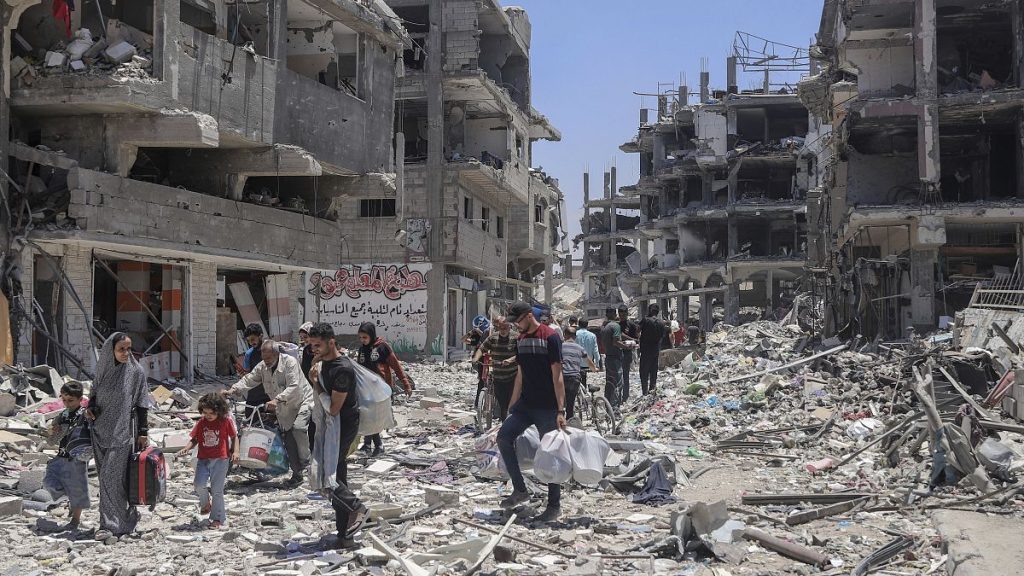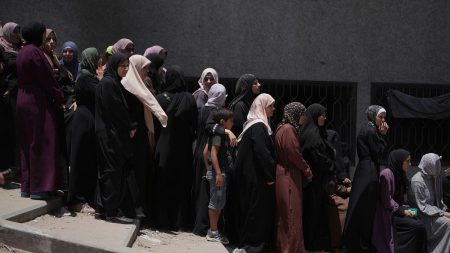The humanitarian situation in Gaza has reached critical levels, as emphasized by Jeremy Laurence, the Spokesperson for the UN High Commissioner for Human Rights. After his recent visit to the Palestinian territories, Laurence reported that the conditions in Gaza are deteriorating rapidly, underscoring the need for an immediate ceasefire. During his discussions with residents, he found that people are yearning for a halt to hostilities, their emotions fraught with despair after enduring “13 months of unrelenting violence.” Daily survival has become incredibly challenging, with individuals forced to scavenge for basic necessities amidst the rubble left by years of conflict, notably citing instances where women and children rummaged through large landfills.
Laurence highlighted the urgent need for humanitarian aid as a primary requirement for the population of Gaza. He termed the ongoing crisis as “preventable” and emphasized that it was imperative for humanitarian assistance to increase significantly to alleviate the suffering of the people. He called upon Israeli authorities to facilitate the inflow of life-saving aid, pointing out that the current conditions are intolerable and growing worse with every passing day. The infrastructure in Gaza has been devastated, leading to the displacement of approximately 1.9 million people, about 90% of the region’s population, many of whom have been relocated multiple times due to ongoing hostilities.
On the political front, there are ongoing discussions aimed at achieving a resolution to the conflict. Reports indicate that a Hamas delegation is expected to meet with Egyptian officials in Cairo, reflecting efforts to mediate the situation. Concurrently, US President Joe Biden has indicated that his administration is set to re-engage in mediation talks with regional stakeholders, including Qatar, Egypt, and Turkey, to seek an end to the violence in Gaza. Biden recently announced a ceasefire agreement between Israel and Hezbollah, suggesting a glimmer of hope for negotiations in the broader region, contingent upon certain conditions aimed at establishing a lasting peace.
Israeli Prime Minister Benjamin Netanyahu has publicly stated his willingness to consider a ceasefire, but insists on a condition that it must coincide with the release of hostages held by Hamas. He reiterated that a cessation of hostilities would ultimately depend on the achievement of Israel’s military objectives, particularly the dismantling of Hamas, which he views as crucial for ensuring national security. The conflict escalated notably following the attacks conducted by Hamas on October 7, 2023, which claimed numerous Israeli lives and prompted a significant military response from Israel targeting Gaza.
As the fighting continues, the human cost of the conflict has been staggering, with the Hamas-run Gaza Health Ministry reporting over 44,300 deaths since the Israeli offensive began. Critically, these figures do not differentiate between civilian casualties and combatant losses, raising concerns about the methodology of such counts. The UN has been able to authenticate that nearly 70% of the casualties in Gaza are women and children, emphasizing the disproportionate impact of the ongoing conflict on non-combatants and the urgent need for protective measures for vulnerable populations.
In summary, the situation in Gaza presents a complex intertwining of humanitarian catastrophe and intricate geopolitical dynamics. The call for a ceasefire from both humanitarian advocates and political figures signifies a recognition of the dire circumstances faced by residents. At the heart of the crisis is the need for immediate humanitarian aid and lasting peace through negotiations among conflicting parties. Understanding the underlying tensions and the human suffering that continues to unfold is essential for fostering an environment conducive to a sustainable resolution for the Gaza conflict and its aftermath. Continued international attention and intervention may prove vital in responding effectively to the escalating crisis and achieving a long-term solution.














